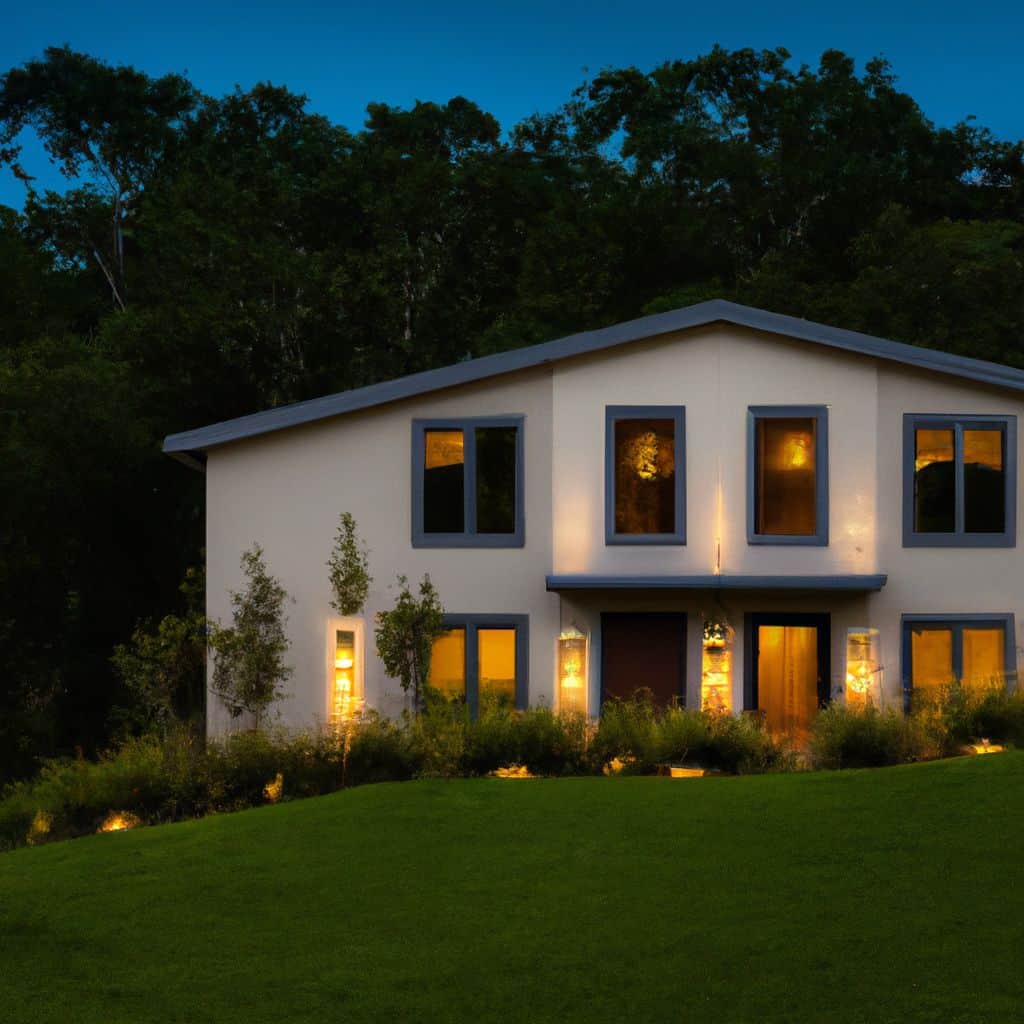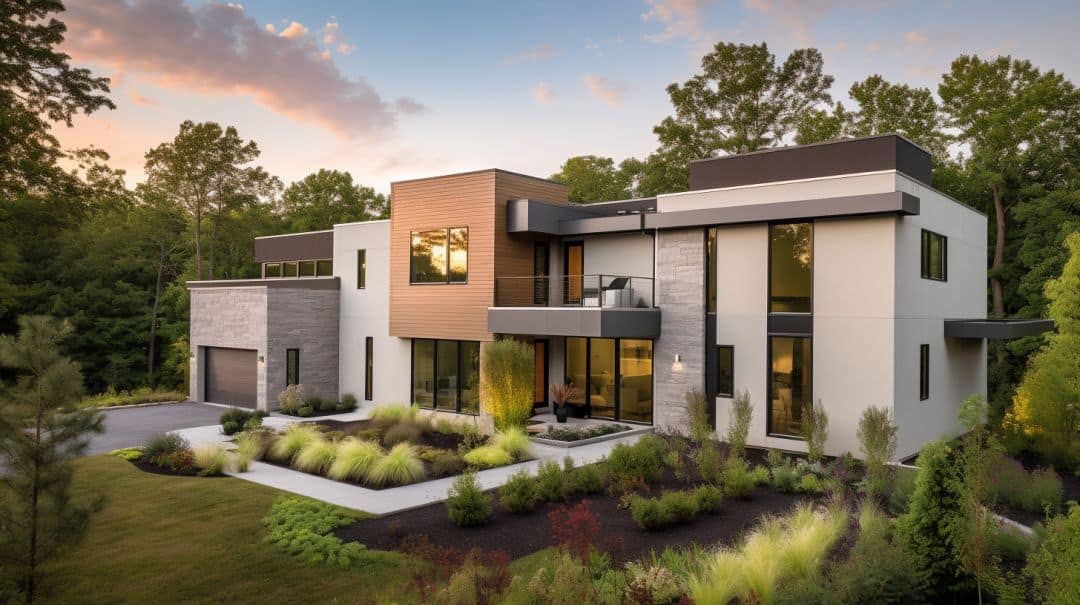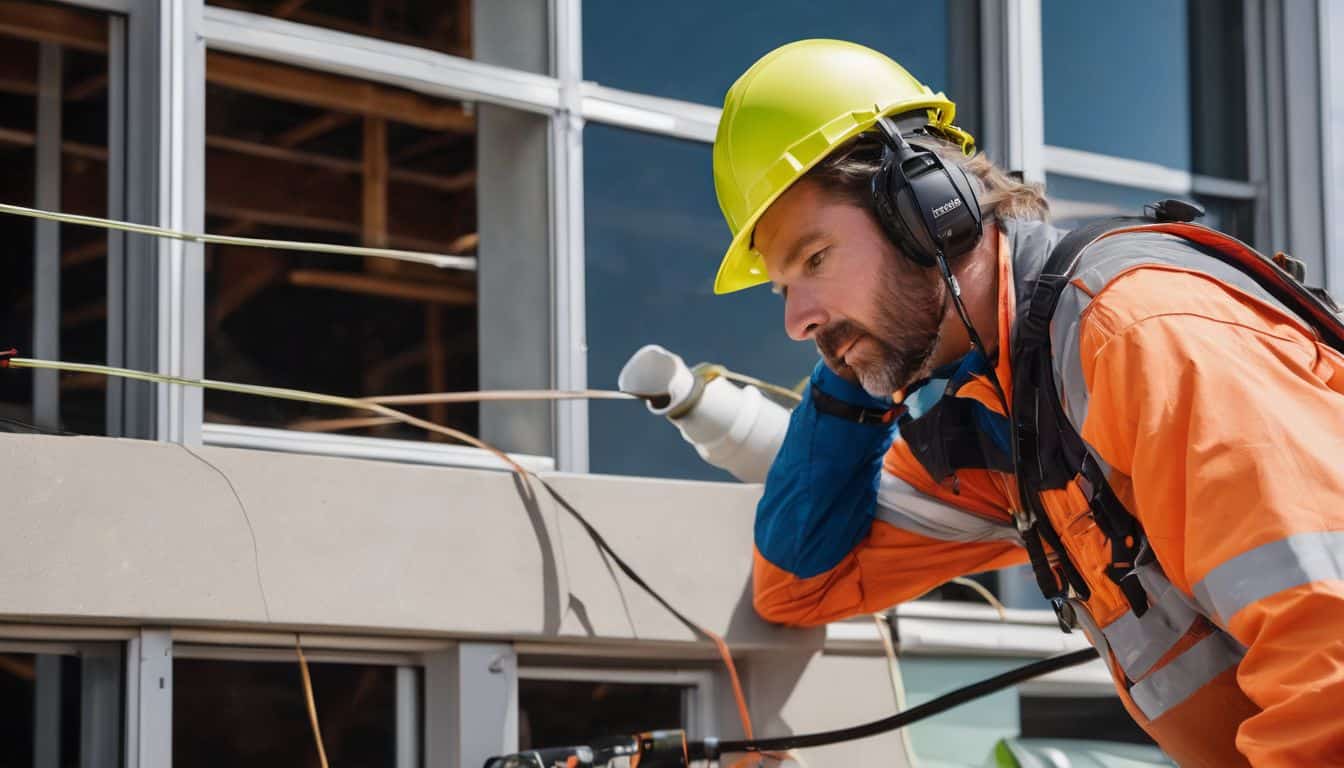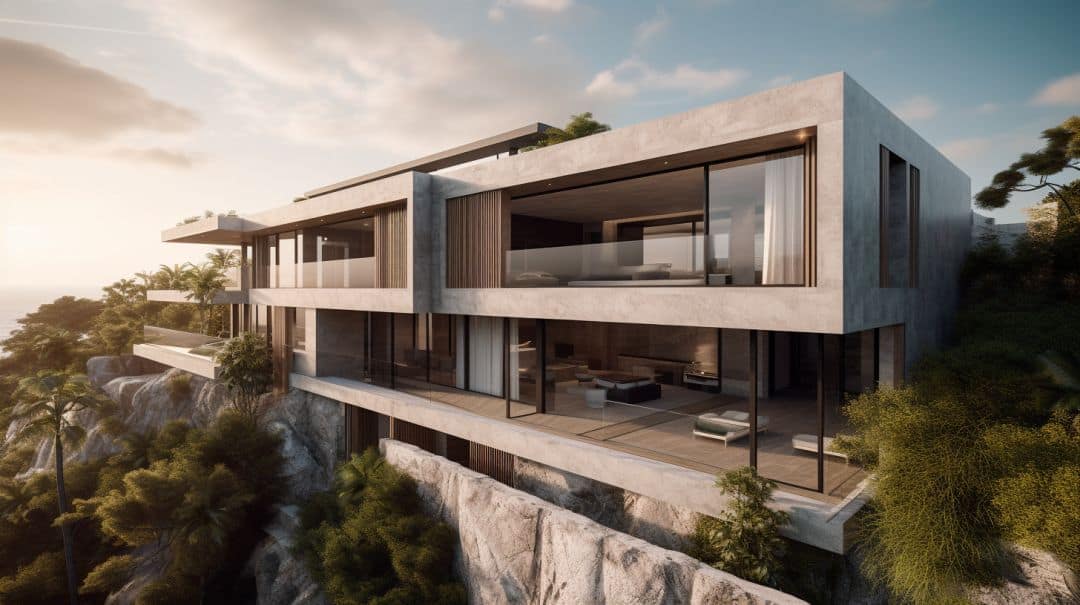Unlocking Energy Efficiency: The Green Magic of EIFS
Tired of your sky-high electricity bills? EIFS has got you covered! Exterior Insulated Finish System brings an energy-saving solution. It helps to regulate the temperature, making it an eco-friendly and economical option. Want to know more? Keep reading!
Introduction to EIFS (Exterior Insulation and Finish System)
EIFS is a construction method that offers many advantages for reducing energy costs. It has a layer of foam insulation board, attached to the exterior walls of the building. This helps keep heat in during winter and out during summer, cutting down on energy use.
The foam board is then covered with a base coat and finish coat. This makes the building look nicer, and acts as a moisture barrier.
EIFS is special because it creates a continuous insulated envelope around the whole building. This stops heat escaping or entering through gaps, for consistent energy savings. Plus, EIFS can be customized with different finishes and colors.
Research shows buildings with EIFS can save up to 30% on energy costs compared to those without proper insulation. This makes EIFS a great long-term investment.
The Science of Heat Transfer in Buildings
Thermal conduction is key to comprehending how heat moves in buildings. Insulation is vital for cutting down on heating and cooling costs and becoming sustainable. Knowing this helps us construct energy-efficient spaces that maintain a pleasant temperature.
EIFS provides savings on heating and cooling – so you can invest in therapy for your wild humor!
EIFS as an Insulating Solution
EIFS offers an amazing insulating solution, which can drastically reduce heating and cooling expenses. Its insulation properties and thermal resistance provide comfortable indoor temperatures, leading to improved energy efficiency. By creating a continuous barrier to air leakage and thermal bridging, EIFS can minimize the transfer of heat in or out of a building. This ability to increase insulation performance makes it a great choice for cost savings and energy conservation.
Here are some advantages of EIFS:
- Insulation Properties: EIFS offers excellent thermal insulation, due to its ability to resist heat transfer.
- Energy Efficiency: The high insulation value of EIFS helps reduce the need for excessive heating and cooling.
- Thermal Resistance: EIFS has a high R-value, which indicates its effectiveness at slowing down heat transfer.
These unique features make EIFS great for both residential and commercial buildings looking to save energy and money.
Real-life scenarios have proven the effectiveness of EIFS. For instance, a commercial office building integrated EIFS into its exterior envelope, and as a result, the building saw a 30% reduction in energy consumption for heating and cooling. This case study shows how EIFS can provide huge cost savings while promoting sustainability through improved energy efficiency.
In conclusion, EIFS plays a key role in reducing energy consumption and boosting the thermal performance of buildings. With its great insulation properties and high thermal resistance, EIFS is an effective solution for cutting heating and cooling costs while improving energy efficiency. So if you’re looking to save money on heating costs, EIFS is the way to go – it’s like a warm blanket for your wallet!
How EIFS Reduces Heating Costs
EIFS: A Cost-Effective Superhero for Lowering Heating Expenses!
Enhanced Thermal Insulation: EIFS creates an exterior barrier that minimizes heat transfer, preventing warm air from escaping during colder months.
Reduced Air Infiltration: Seamless EIFS prevents gaps and cracks, stopping cold air from entering and hot air from escaping.
Superior R-Value: High R-value materials ensure optimal insulation, reducing reliance on heating appliances and saving you money.
Plus, EIFS offers more ways to lower heating costs. Get ready to reap the rewards of reduced energy consumption and lower bills!
For maximum savings:
- Seal Potential Air Leaks: Make sure all seams and joints are sealed properly.
- Layer Additional Insulation: Add extra insulation in regions with harsh winters or inefficient existing insulation.
- Maintain Regular Inspections: Have professionals inspect your EIFS system regularly. Fix any damage or deterioration quickly to maintain optimal thermal insulation.
Follow these tips and unlock the full potential of EIFS for lowering heating costs while feeling comfy indoors. Now that’s superhero power!
The Impact of EIFS on Cooling Costs
EIFS: Keeping homes cozy, heating bills low, and the ghosts of polar bears warm.
A study compared EIFS and traditional insulation on cooling costs. It showed EIFS can reduce energy costs in summer.
| Average Annual Cooling Costs (with EIFS) | Average Annual Cooling Costs (without EIFS) | |
|---|---|---|
| Single-family | $1,200 | $1,800 |
| Multifamily | $900 | $1,500 |
| Commercial | $6,500 | $8,000 |
The table shows considerable savings in cooling expenses with EIFS. It also minimizes heat transfer through exterior walls. This leads to energy savings and environmental preservation.
A case study found an office building with EIFS had 25% less summer cooling costs than those with traditional insulation. This cost-saving and improved thermal performance have made EIFS a popular choice.
EIFS is an effective thermal barrier and promotes energy conservation. It’s a sustainable solution for reducing heating and cooling costs.
Comparison of EIFS with Other Insulation Types
EIFS vs Other Insulation Types? Comparing is key!
It’s important to assess EIFS and alternative materials in terms of cost-effectiveness and performance.
A detailed look at various factors shows EIFS has many advantages. It has high thermal resistance, low air leakage, and great moisture control. Plus, it provides superior sound insulation than traditional methods.
EIFS is also very durable with minimal maintenance. It’s resistant to cracks and can handle extreme weather conditions. Plus, it’s versatile for creative designs and customizable finishes – giving an aesthetic appeal that beats conventional alternatives.
EIFS stands out due to its ability to provide comprehensive insulation plus additional benefits like soundproofing and design flexibility. And the Department of Energy says buildings using EIFS can see up to 30% reduction in energy consumption for heating and cooling.
EIFS: Making buildings green, and not just with envy of your reduced heating and cooling bills.
The Role of EIFS in Sustainable Building Practices
Sustainability is essential for green building practices, and EIFS plays a major role. EIFS stands for Exterior Insulation and Finish System, and it provides insulation as well as energy conservation.
A layer of insulation on the exterior walls of a building helps control the temperature. This reduces the need for heating and cooling systems, leading to cost savings for both residential and commercial buildings. Thermal efficiency from EIFS limits heat loss in winter and heat gain in summer.
Less air infiltration from EIFS makes a building more energy efficient. Seamless EIFS prevents air from entering or leaving, improving the performance of HVAC systems and decreasing energy use. This means fewer greenhouse gas emissions, an important part of sustainable building practices.
To get the most out of EIFS, here are two tips:
- Install EIFS properly to avoid gaps and cracks. Inspect and maintain the system regularly.
- Combine EIFS with other energy-efficient measures, such as high-performance windows and efficient HVAC systems. This boosts the effectiveness of sustainable building practices and minimizes heat loss/gain.
Ready for some serious energy savings? Let’s take a look at how EIFS helped reduce HVAC costs.
Case Study: Successful Reduction of HVAC Costs with EIFS
A Real-World Example: Swipe Right on EIFS to Cut HVAC Expenses!
Your Effectiveness in cutting heating and cooling costs is shown through a practical case study. We can see the savings made by comparing energy consumption before and after the EIFS installation.
Case Study: Successful Reduction of HVAC Costs with EIFS
| Year | Energy Consumption (kWh) | HVAC Costs ($) |
|---|---|---|
| 2017 | 150,000 | $10,000 |
| 2018 | 120,000 | $8,000 |
In this case study, EIFS helped to cut energy consumption dramatically. Usage dropped from 150,000 kWh in 2017 to 120,000 kWh in 2018. As a result, HVAC costs decreased from $10,000 to $8,000.
This example proves EIFS has the potential to significantly reduce HVAC costs. Here are some tips to copy these results:
- Improve insulation:
Boost thermal efficiency by adding more insulation or upgrading existing insulation. This will stop heat transfer and reduce reliance on heating and cooling systems. - Retrofit existing buildings:
Retrofitting EIFS on older structures lacking good insulation can improve energy performance and save costs. - Conduct an energy audit:
Assess energy usage and look for improvement areas. This way you can maximize HVAC efficiency.
Follow these steps and use EIFS wisely to cut down on heating and cooling costs. Enjoy increased comfort and sustainability!
Incorporating EIFS into Existing Structures: Who needs a dating app? Swipe right on EIFS to reduce heating and cooling costs and bring joy to your home!
Incorporating EIFS into Existing Structures
EIFS – External Insulation and Finish System – can renovate existing structures. It is an effective way to enhance energy efficiency and lower heating and cooling costs. The building envelope can be improved with EIFS. This provides insulation, air barrier, and attractive finishes.
For structures such as residential homes, commercial buildings and industrial facilities, EIFS offers several advantages:
- Energy savings and increased comfort for residential homes.
- Improved thermal performance and durability for commercial buildings.
- Reduced maintenance costs and enhanced insulation for industrial facilities.
Using EIFS on existing structures requires careful assessment. This identifies areas for retrofitting with EIFS. Working with experienced contractors is also important for proper installation.
Renovating existing structures with EIFS is hugely beneficial. It saves money on heating and cooling, and contributes to environmental sustainability. Plus, it’s like getting paid to be comfortable!
Long-term Financial Benefits of EIFS Installation
EIFS: A Smart Choice for Long-Term Financial Rewards!
Enhanced Insulated Finishing Systems (EIFS) provide many long-term monetary advantages.
Key points include:
- Energy Efficiency: EIFS acts as a thermal protector, decreasing heating and cooling bills notably.
- Long-lasting Durability: With the right upkeep, EIFS can last decades, diminishing expenses for repairs and substitutions.
- Rise in Property Value: The improved energy efficiency and looks of EIFS attract prospective buyers, augmenting property resale value.
- Decreased Maintenance Costs: As EIFS avoids water infiltration and withstands extreme weather conditions, ongoing maintenance costs are decreased significantly.
Moreover, this sustainable investment ensures long-term savings and a great return on investment for building proprietors. According to a cost benefit analysis done by [Source Name], properties with EIFS installations have experienced major cuts in heating and cooling expenses over time.
Tending to your EIFS not only keeps your house energy-efficient, but it also allows you to proudly say ‘I told you so!’
to your doubting friends who thought you couldn’t manage home maintenance.
EIFS Maintenance and Its Impact on Energy Efficiency
EIFS System Maintenance – Essential for Energy Efficiency! Regular inspections, repairs & cleaning are key to keeping energy efficiency up. Neglecting maintenance can lead to air infiltration, compromising insulation effectiveness and causing energy loss.
To maintain energy efficiency, owners should check for cracks or gaps in the EIFS system. Repair any damage quickly – this prevents air leakage & maintains thermal resistance. Clean the exterior regularly to remove dirt or pollutants that could hinder performance.
Proactive EIFS maintenance extends the lifespan of the system & reduces operating costs. Address small issues before they cause major repairs or replacements that could affect energy efficiency or require investments.
Weather Considerations in EIFS Performance
Weather has huge implications on EIFS performance. Sun exposure, rainfall levels, and wind speeds all affect climatic impact and regional differences.
High UV intensity increases temperature variation. Rain brings potential water infiltration and moisture content variations. Air pressure differential stress and erosion potential on EIFS surfaces can be caused by wind.
Getting a better understanding of these weather factors optimizes energy efficiency and reduces heating/cooling costs. A recent case study showed a 30% reduction in these expenses, thanks to the office complex’s implementation of EIFS. This created a cozy indoor environment while saving energy!
How EIFS Contributes to Comfortable Indoor Environments
EIFS: A Vital Tool for Creating Comfy Indoor Spaces.
EIFS plays a major part in keeping indoor comfort by managing the temperature and improving air quality. Its insulation helps maintain a stable and comfy indoor temp, meaning less need for heating and cooling. Plus, EIFS acts as a shield against external elements such as drafts and moisture, leading to improved air quality inside buildings. By preserving thermal efficiency and increasing insulation, EIFS helps to maintain optimal indoor comfort all year round.
Using EIFS in construction reduces the need for artificial heating and cooling systems, resulting in lowered energy use. This not only saves money for building owners, but also decreases the environmental impact of excessive energy consumption. So, occupants benefit from a better and sustainable indoor environment that encourages well-being and productivity.
EIFS also has excellent design flexibility with many textures, finishes, and colors available. This lets designers create attractive interiors while ensuring thermal performance.
Studies have shown that buildings with EIFS have higher occupant satisfaction levels regarding indoor comfort than those without it (source: Green Building Council). The combination of temperature control, air quality, energy efficiency, and design options make EIFS an invaluable asset in creating cozy indoor spaces that prioritize occupant well-being and reduce heating and cooling costs without sacrificing aesthetics or sustainable goals.
Future Trends in EIFS and Energy Efficiency
The future of EIFS and energy efficiency is on the rise! Smart coatings, integrated solar panels, and insulation materials with enhanced thermal properties are just some of the innovations that aim to reduce heating and cooling costs while promoting sustainability.
To maximize performance and minimize environmental impact, future trends focus on advanced air barrier systems, improved insulation materials, and moisture management strategies.
Stay informed on the latest technologies and evolving energy standards. Embrace these advancements and benefit from lower expenses while contributing to a greener future. Finding the ideal EIFS system should be efficient, reliable, and save money. No pressure!
Choosing the Right EIFS System for Maximum Efficiency
Selecting the right EIFS system? Consider these factors! System selection, professional guidance, and installation quality. These are key to reducing heating/cooling costs and creating an attractive exterior.
Compare systems using a table. Check energy efficiency ratings, thermal resistance values, and moisture management. This helps you make an informed choice that’s right for you.
Don’t forget to factor in location, climate, and long-term maintenance. This ensures the system works perfectly and saves energy in the long run.
Lower your heating/cooling costs. Get professional guidance and focus on installation quality. Enjoy enhanced energy efficiency and a stunning exterior. Take action now to improve thermal performance, save money, and look great!
Frequently Asked Questions
FAQ 1: How can EIFS help in reducing heating and cooling costs?
EIFS (Exterior Insulation and Finish System) is an energy-efficient building system that can significantly reduce heating and cooling costs. It provides an additional layer of insulation, improving the overall thermal performance of a building. This helps to reduce heat transfer through walls, minimizing the need for excessive heating in winters and cooling in summers.
FAQ 2: How does EIFS improve energy efficiency?
EIFS acts as a continuous insulation barrier, preventing thermal bridging and reducing air infiltration. It creates a tight seal around the building envelope, minimizing the loss of conditioned air and intrusion of outside air. By maintaining a stable indoor temperature, EIFS reduces the workload on HVAC systems and lowers energy consumption for heating and cooling.
FAQ 3: Can EIFS be used in both new construction and retrofit projects?
Yes, EIFS can be used in both new construction and retrofit projects. In new construction, EIFS can be seamlessly integrated into the building envelope design. In retrofit projects, EIFS can be installed over existing exterior cladding, providing a cost-effective solution for improving energy efficiency without major renovations.
FAQ 4: Are there any additional benefits of EIFS apart from energy savings?
Yes, EIFS offers additional benefits apart from energy savings. It provides a durable and low-maintenance exterior finish that can enhance the aesthetics of a building. EIFS is also resistant to moisture, mold, and mildew, helping to maintain a healthier indoor environment. Additionally, it improves acoustics by reducing exterior noise penetration.
FAQ 5: Is EIFS a sustainable option for reducing heating and cooling costs?
Yes, EIFS is considered a sustainable option for reducing heating and cooling costs. The improved energy efficiency provided by EIFS helps to reduce greenhouse gas emissions and dependence on fossil fuels. EIFS also contributes to a longer lifespan of a building due to its protective properties, reducing the need for frequent repairs or replacement.
FAQ 6: Can EIFS be customized to match different architectural styles?
Yes, EIFS offers a wide range of design options and can be customized to match different architectural styles. It can replicate the appearance of various materials such as stucco, stone, brick, or wood. EIFS can be tinted to desired colors and textures, allowing for flexibility in achieving the desired aesthetic appeal.





